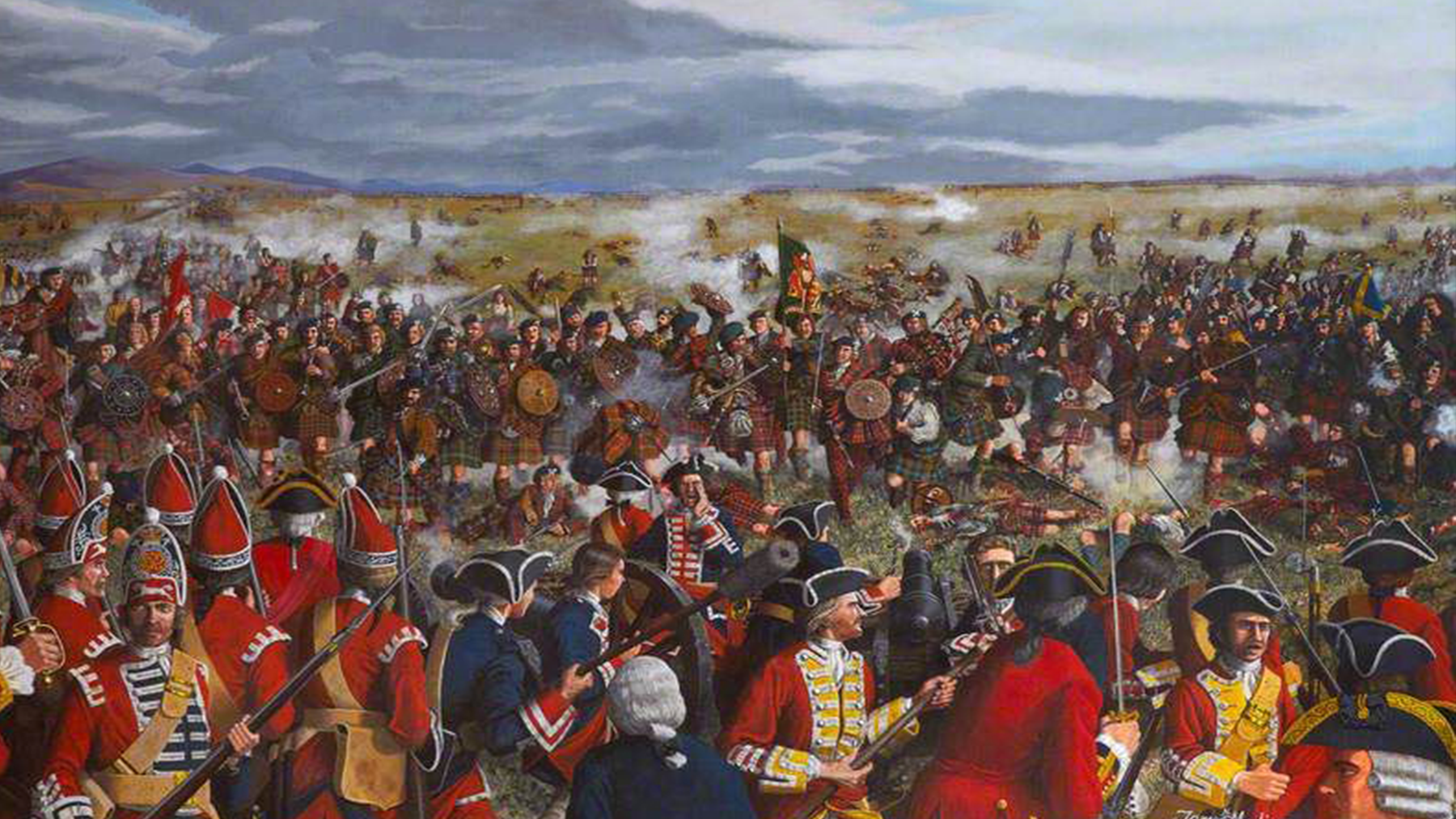
Royal & Plaid Travel Diaries: Culloden
Royal & Plaid Travel Diaries
Culloden – The Last Full-Scale Battle on British Soil
The windswept expanse of Drumossie Moor lies five miles east of Inverness, a place steeped in history and tragedy. It was here, on 16 April 1746, that the Battle of Culloden unfolded. On one side, the Jacobite army fought to reclaim the thrones of Britain and Ireland for its Stuart king. On the other, the British Government forces stood resolute in their mission to quash the uprising. Nearly 280 years later, we, Campbell and Angela Docherty, founders of Royal & Plaid, visited this historic site with our family to uncover its stories and significance.

A Journey Back in Time
A snowy January day, with temperatures hovering at a brisk 2°C, set the scene for our visit. Wrapped up against the chill, we started our journey with much-needed hot chocolate, lattes, and hearty bacon rolls at the National Trust for Scotland’s Visitor Centre. Fortified, we embarked on the Culloden Spy Trail—a family-friendly exploration of exhibitions, artefacts, and videos recounting the events leading up to that fateful day in 1746.
Culloden is often thought of as a purely Highland story, yet its roots stretch across Europe. The battlefield tells a tale of ambition, loyalty, and heartbreak, offering lessons that resonate far beyond Scotland.
Who Were the Jacobites?
Jacobitism was a political movement aiming to restore the Stuart kings to the thrones of Scotland and England. While some Jacobites supported the Stuarts as the rightful monarchs, others opposed Parliament’s authority over royal succession. This diverse coalition included Highlanders, Lowlanders, and even supporters from England, Ireland, and France.
The Rise of Charles Edward Stuart
Better known as “Bonnie Prince Charlie” or “The Young Pretender,” Charles Edward Stuart was born in Rome, the grandson of James VII. In 1745, he resolved to reclaim the throne, landing on Eriskay in the Outer Hebrides with the goal of rallying an army. Despite early successes, his campaign faltered after a challenging march south and a retreat to the Highlands. Meanwhile, the British Government dispatched the Duke of Cumberland to lead their forces and crush the Jacobite rebellion.

The Battle of Culloden
On the night of 15 April 1746, Charles’s troops planned a surprise attack on Cumberland’s army encamped at Nairn. However, the plan fell apart as dawn broke, leaving the Jacobites exhausted, cold, and demoralised. They returned to Drumossie Moor to await the inevitable confrontation.
The stark contrast between the two armies was evident. The Jacobites, numbering 5,500, were weary and underfed, while the 7,500-strong Government forces were well-rested and well-supplied. Within an hour, the battle was over. The Jacobites suffered catastrophic losses—1,250 dead, many more wounded or captured. In comparison, Government troops lost just 50 men.

The Aftermath
Culloden marked the end of the Jacobite rising, but the repercussions were far-reaching. The British Government enacted brutal measures to suppress Highland culture and dismantle the clan system. The Disarming Act of 1746 banned traditional Highland dress, including kilts and tartans, which became symbols of rebellion. Bagpipes, deemed “instruments of war,” were also outlawed. Entire communities faced persecution, with many deported to the American colonies and the West Indies.
The Flight of Bonnie Prince Charlie
After the battle, Charles fled, abandoning his army. Famously disguised as Betty Burke, a maidservant to Flora MacDonald, he escaped “over the sea to Skye,” an episode immortalised in song. Charles’s later years were spent in exile, and he died in Rome in 1788, far from the throne he sought to reclaim.
Reflections on Culloden
As we walked the battlefield, guided by markers denoting the Jacobite and Government lines, the sense of history was overwhelming. For the children, the Culloden Spy Trail brought the past vividly to life. For us, it was a poignant reminder of the resilience and sacrifice of those who fought here. After a day immersed in Scotland’s history, we headed back to Inverness, ready to reflect on our journey over a well-earned meal.

Plan Your Visit
We highly recommend visiting Culloden to experience its atmosphere and learn about this pivotal moment in history. The National Trust for Scotland’s Visitor Centre offers insightful exhibits and activities suitable for all ages. For more information, visit The National Trust for Scotland.



